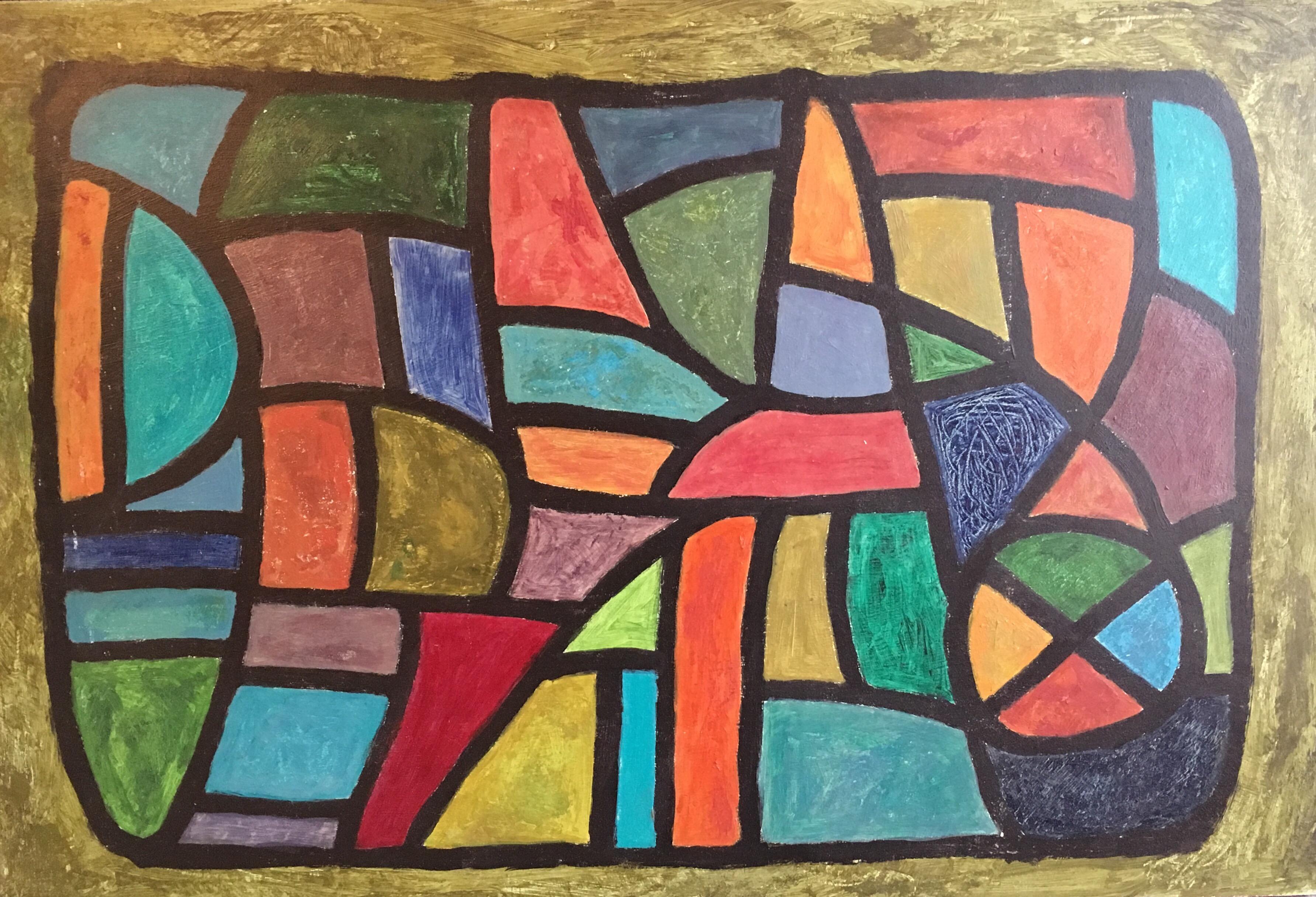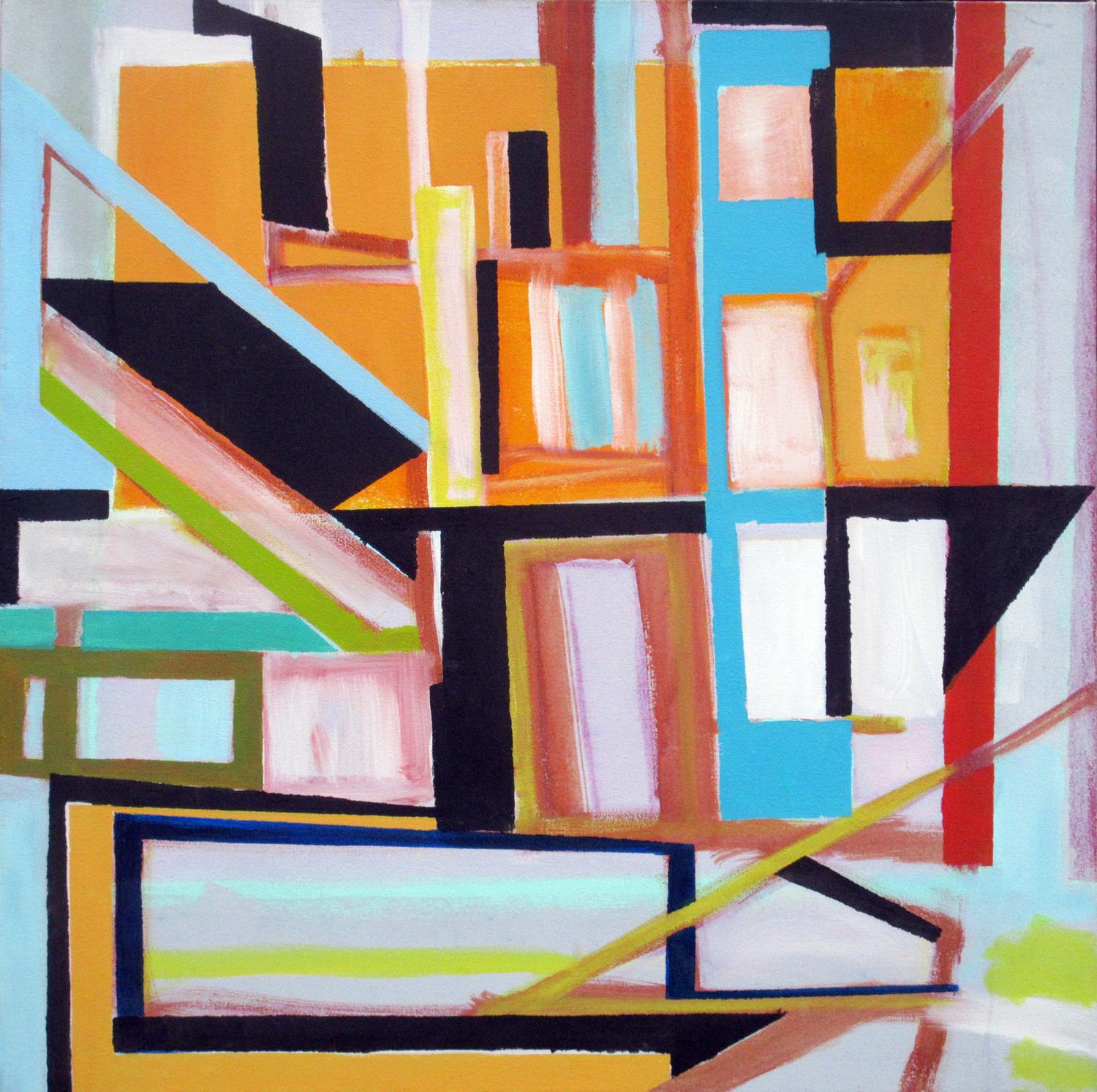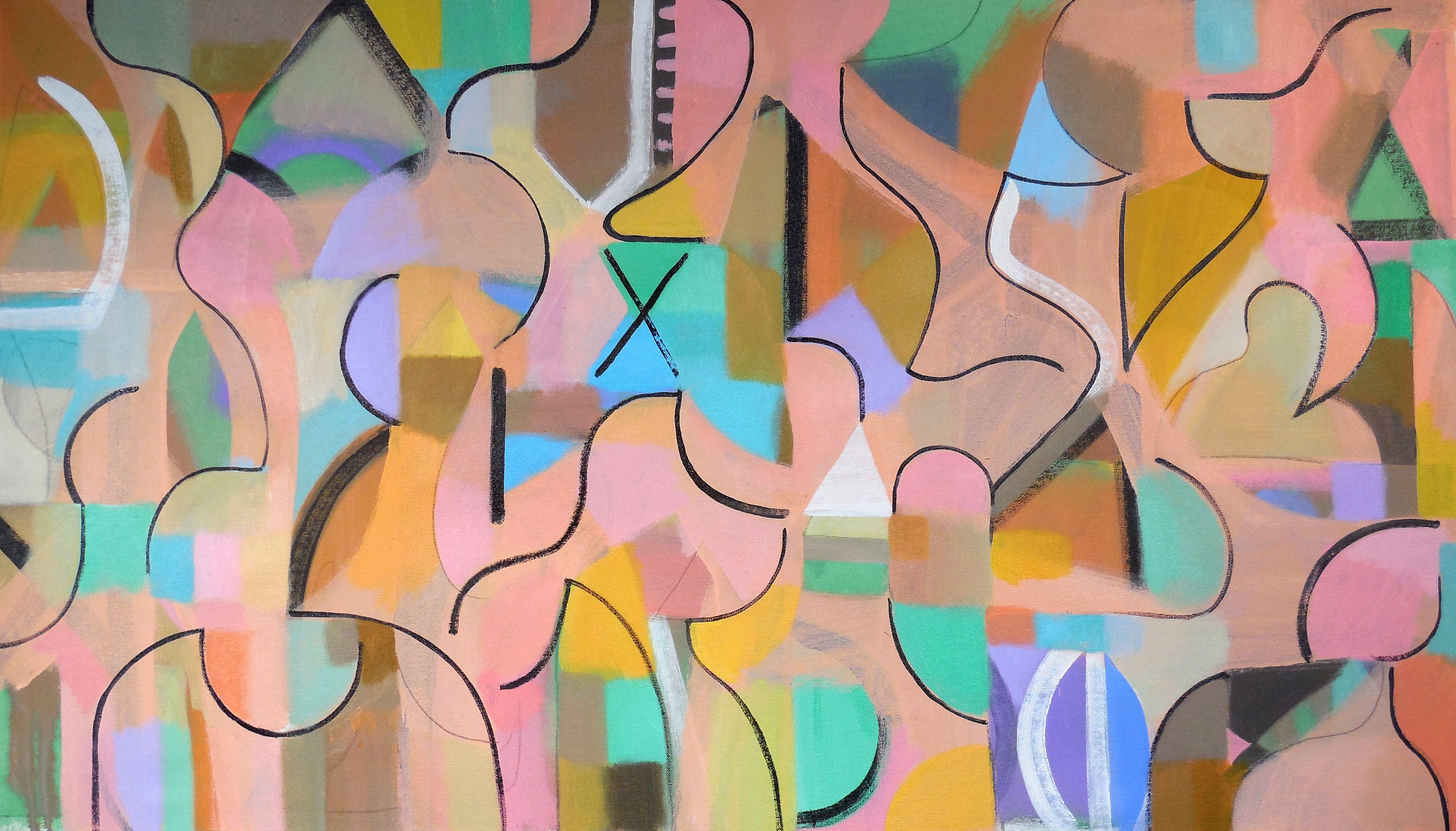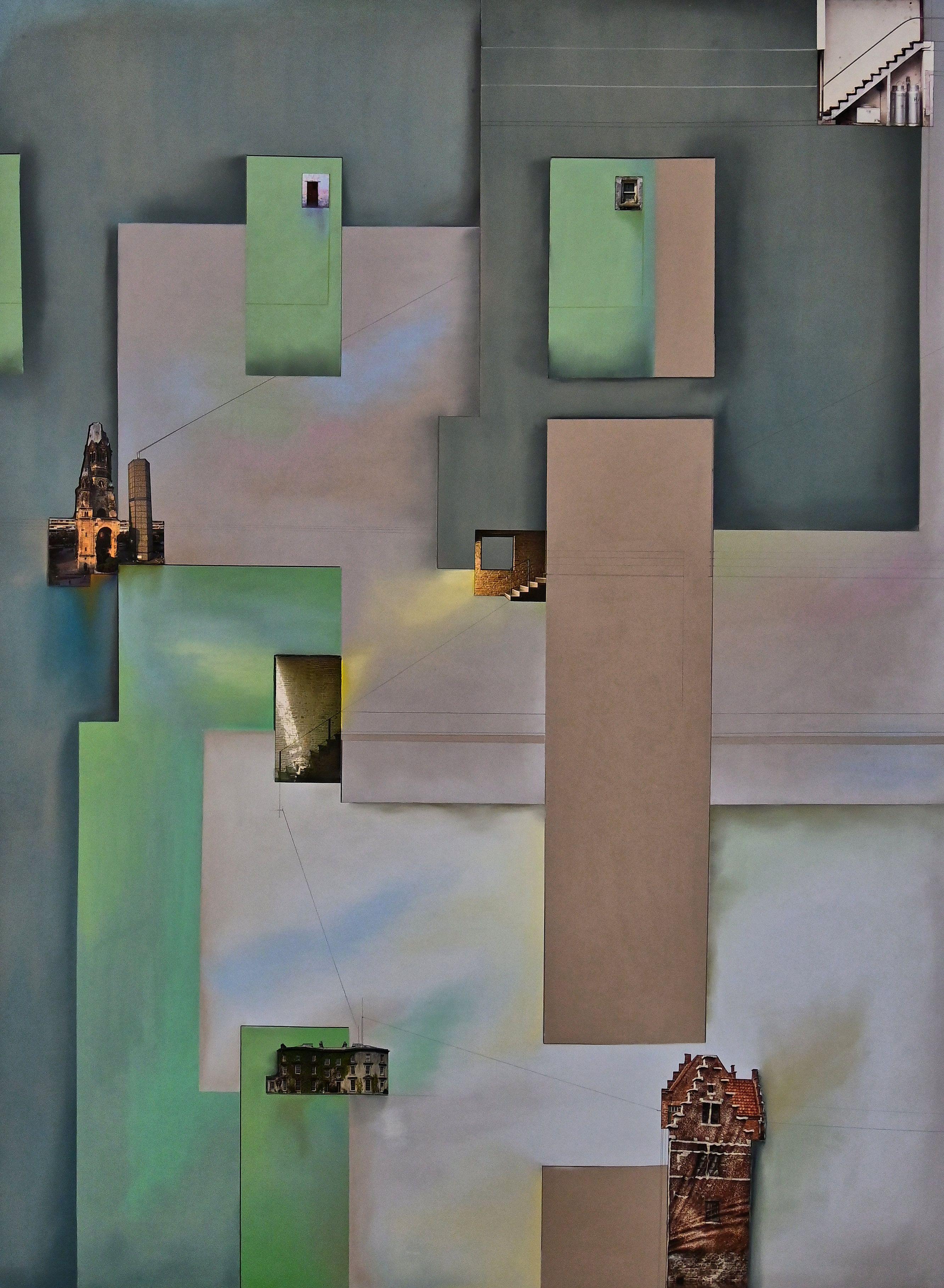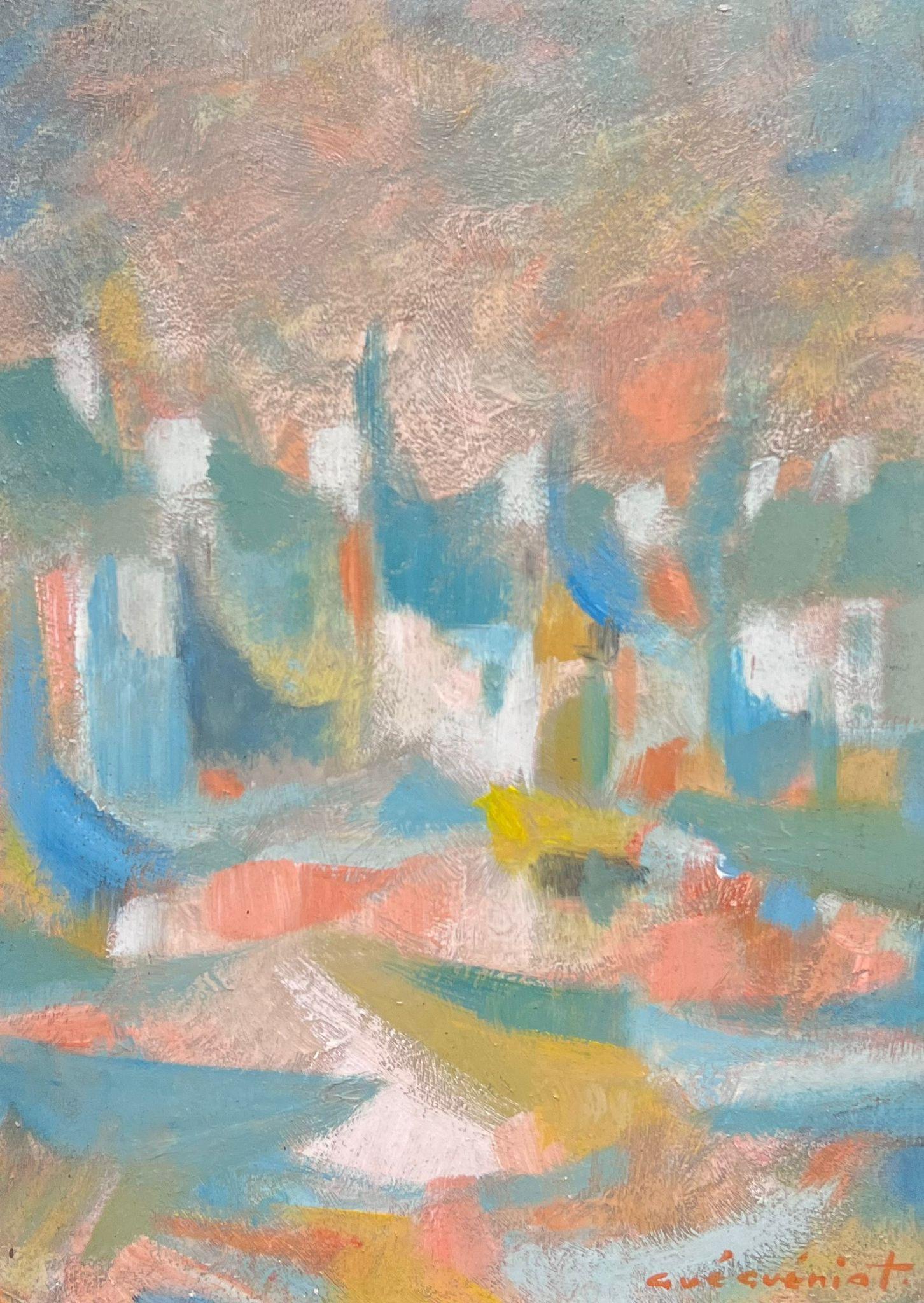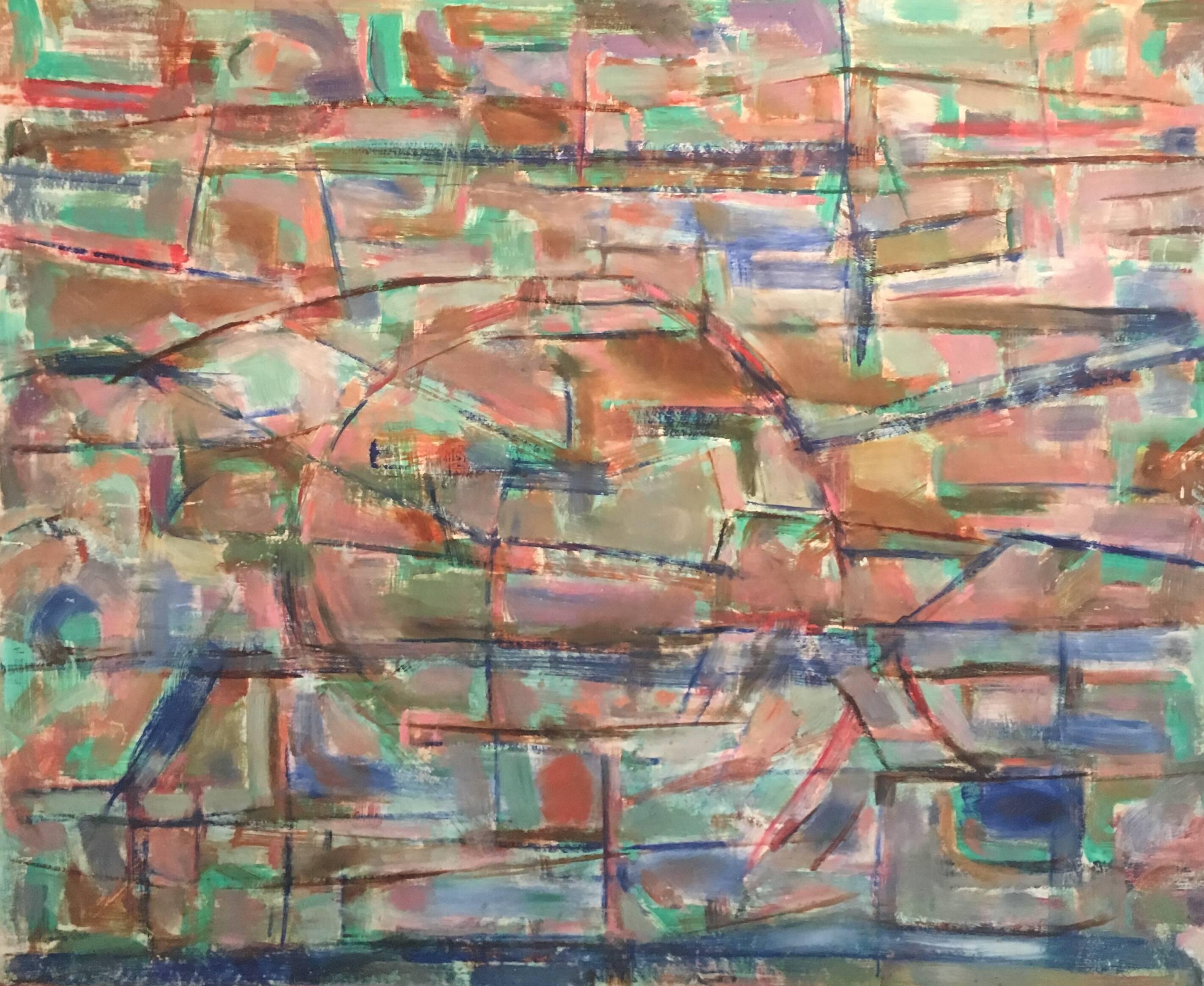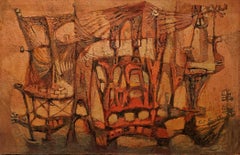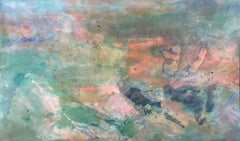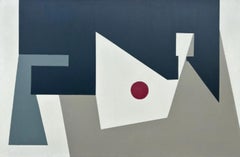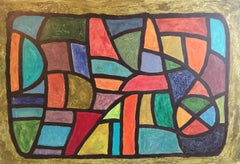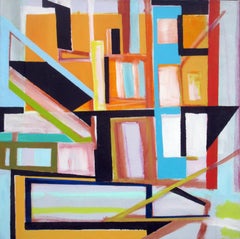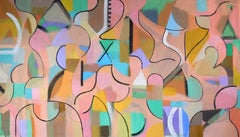Items Similar to "Upper Street" Manierre Dawson, Cubism, Abstract Pastels, Cityscape
Want more images or videos?
Request additional images or videos from the seller
1 of 8
Manierre Dawson"Upper Street" Manierre Dawson, Cubism, Abstract Pastels, Cityscape1912
1912
$30,400
$38,00020% Off
£23,193.74
£28,992.1720% Off
€26,523.41
€33,154.2620% Off
CA$42,840.09
CA$53,550.1220% Off
A$46,712.53
A$58,390.6620% Off
CHF 24,789.87
CHF 30,987.3420% Off
MX$564,739.37
MX$705,924.2120% Off
NOK 313,733.83
NOK 392,167.2820% Off
SEK 287,580.69
SEK 359,475.8620% Off
DKK 198,102.52
DKK 247,628.1420% Off
About the Item
Manierre Dawson
Upper Street, 1912
Oil on board
10 x 15 inches
Provenance:
The artist
Estate of the artist
Private Collection (gift of Lillian Dawson, widow of the artist)
Hollis Taggart Galleries, New York and Stratford Fine Art, New York
Private Collection, 2005
Private Collection, New York, by descent
Literature:
This painting is recorded in the Dawson Record under the heading "1912": "Upper Street, 10 x 14, basswood."
R.J. Ploog, M. Bairstow, A. Boyjian, Manierre Dawson: A Catalogue Raisonné, Jacksonville, 2011, no. 1912.26, p. 189, illustrated.
Chicago-born Manierre Dawson (1887-1969) was a major early American modernist painter — perhaps the Windy City's most progressive spirit. It is generally believed that this civil engineer and self-taught artist achieved a non-objective abstraction with no knowledge of the activities of Kandinsky, whose work Dawson's resembles. He began painting in 1903 or 1904: nature studies that recall Whistler's "nocturnes." By 1906, he painted figural compositions, such as Figures on Pale Blue, that show the obvious influence of Arthur B. Davies. Aspidistra, from the same year, is a minimalist still-life, painted with great precision. The organic curves of the plant have an Art Nouveau elegance. In contrast, Six Flowers in a Vase, painted in 1908, is more two-dimensional.
The artist stated that after graduating in civil engineering from the Illinois Institute of Technology in 1909, when he began working for Holabird and Roche as an architectural designer, he fell under Cézanne's spell: "The following year, . . . I was seriously involved in making pictures that were 'non-objective abstractions,' working from original themes." Prognostic (Milwaukee Art Center), probably Dawson's most famous work, which Gertrude Stein purchased, comes from 1910. Forever in search of stylistic sources, art historians have been struck by the painting's resemblance to what Kandinsky was doing in 1909-1910. Before that time, the avant-garde Russian painter was still working in the Jugendstil-Expressionistic mode. Prognostic, executed in early 1910, apparently pre-dates Kandinsky's famous "improvisations" of the same year, which represent the Russian artist's leap into pure non-objective art. The 1909 "improvisations" are still recognizable as representations of landscape. Susan S. Weininger, in Chicago Modern (2004) adds a possible source for Prognostic: lessons from Arthur Wesley Dow's book Composition (1899), and she quotes from Dawson's notebook: "[he was attempting] "to fix forms by painting or sculpture that have given me an emotion, hoping to find some who reacted as I did to these shapes and colors presented on canvas or in some plastic material. . . . " Furthermore, he stated that Prognostic was one of seven paintings influenced by his engineering and mathematics courses "in the background of coordinates and super-position of differentials. . . ."
In late June of 1910, Dawson made a trip to Europe. There is, unfortunately, no mention in his diary of avant-garde art that he may have seen, however, he did visit Gertrude Stein's residence, where Picasso's 1906 portrait of Stein (Metropolitan Museum of Art) was hanging, along with works by Cézanne, Matisse, and other paintings by Picasso. Surely Matisse's Olive Trees (Metropolitan Museum; Lehman Coll.) would have made an impression on Dawson. Writers assume that Dawson remained unaware of Kandinsky until the Armory Show toured Chicago. The rest of Dawson's story might be called his late period; moreover, he left Chicago in 1914 to settle on a farm in Michigan. Lacking encouragement and occupied with the demands of the farm, Manierre Dawson almost stopped painting. Despite his innovative genius, Dawson "ultimately had little effect on [Chicago's] modernists." In 1968 there was a retrospective of Manierre Dawson's works at the Ringling Museum, Sarasota, Florida, and at the Norton Gallery in Palm Beach. Another followed in 1976 in Chicago's Museum of Contemporary Art.
About the Seller
5.0
Platinum Seller
Premium sellers with a 4.7+ rating and 24-hour response times
Established in 2022
1stDibs seller since 2022
132 sales on 1stDibs
Typical response time: <1 hour
- ShippingRetrieving quote...Shipping from: New York, NY
- Return Policy
More From This Seller
View All"Abstract Landscape" Karl Knaths, Surrealist, American Modernist Abstract Work
By Karl Knaths
Located in New York, NY
Karl Knaths
Abstract Landscape, 1955
Signed lower right; signed and dated on the reverse
Oil on canvas
27 x 41 inches
Provenance
Collection of Marika Herskovic, New Jersey
Private C...
Category
1950s Abstract Abstract Paintings
Materials
Canvas, Oil
"Untitled (Park Avenue Series)" Beryl Barr-Sharrar, 1979 Color Field Abstraction
Located in New York, NY
Beryl Barr-Sharrar
Untitled (Park Avenue Series), 1979
Signed and dated on the reverse
Acrylic on canvas
44 x 73 1/2 inches
As an undergraduate at Mount Holyoke College (Beryl McLe...
Category
1970s Color-Field Abstract Paintings
Materials
Canvas, Acrylic
"Abstract Interior of Room" Myron Lechay, Colorful Early Geometric Abstract
By Myron Lechay
Located in New York, NY
Myron Lechay
Abstract Interior of Room, 1923
Signed upper right corner and dated upper left corner
Oil on canvas
24 x 20 inches
Provenance:
Estate of the artist
Spanierman Gallery, ...
Category
1920s Abstract Abstract Paintings
Materials
Canvas, Oil
"Composition" Balcomb Greene, Geometric Abstract, Early Modernist Composition
By Balcomb Greene
Located in New York, NY
Balcomb Greene
Composition, 1936
Signed Balcomb Greene on verso upper stretcher bar
Signed on backing board: Balcomb Greene
Oil on canvas
30 1/4 x 46 inches
Provenance:
The artist
A...
Category
1930s Abstract Abstract Paintings
Materials
Canvas, Oil
"Postcard Geometry" Mary Abbott, Geometric Abstract Crayon on Paper Composition
By Mary Abbott
Located in New York, NY
Mary Abbott
Postcard Geometry
Signed lower right
Crayon on paper
4 x 5 1/2 inches
Among the early exponents of Abstract Expressionism, Mary Abbott created powerful oil paintings in...
Category
Mid-20th Century Abstract Expressionist Abstract Paintings
Materials
Paper, Crayon
"Study for TH" Diana Kurz, Mid-Century Push And Pull Abstract Expressionist Work
By Diana Kurz
Located in New York, NY
Diana Kurz
Study for TH
Pastel and gouache on paper
21 1/2 x 20 inches
Diana Kurz (born 1936) is an Austrian-born feminist painter. In 1938, Diana Kurz's family fled Austria, first...
Category
1960s Abstract Expressionist Abstract Drawings and Watercolors
Materials
Paper, Pastel, Gouache
You May Also Like
Mid-20th Century Cubism Abstract Oil Painting, Multi Coloured, British Artist
Located in Cirencester, Gloucestershire
Cubism Abstract Oil Painting, Multi Coloured, British Artist
British School, 20th century
Oil painting on board, unframed
Board size: 16 x 24 inche...
Category
Mid-20th Century Abstract Abstract Paintings
Materials
Oil
$715 Sale Price
30% Off
Robert W. Petrick, City Life (Abstract Painting, Construction)
By Robert Petrick
Located in Los Angeles, CA
Robert W. Petrick
City Life
Acrylic on Canvas
36 x 36 x 1 inches
This dynamic abstract "Construction" by Robert W. Petrick is inspired by city life. East Village, New York.
Int...
Category
21st Century and Contemporary Abstract Abstract Paintings
Materials
Canvas, Acrylic
Crosstown Traffic, Painting, Acrylic on Canvas
By Hal Mayforth
Located in Yardley, PA
An array of loose curved and angled brushstrokes on a colorful background of ochres, greens and yellows. The result reminds me of navigating a city by automobile and the great Hendri...
Category
2010s Abstract Abstract Paintings
Materials
Acrylic
Metropolitan Landscapes #1, Painting, Pastels on Paper
By Christian Culver
Located in Yardley, PA
Pastel on heavy archival paper with architectural photographs mounted. Note - the size given is the actual size of the image. Comes in a traveling frame...
Category
Early 2000s Abstract Abstract Paintings
Materials
Pastel
French Village Abstract Expressionist Signed Oil Warm Colours
Located in Cirencester, Gloucestershire
Abstract Expressionist Sky Composition
by Gerard Guegueniat (French 1970's)
signed oil painting on board, framed
framed: 21.5 x 27 inches
board: 18 x 12 inches
provenance: private co...
Category
Mid-20th Century Impressionist Abstract Paintings
Materials
Oil
$3,340 Sale Price
30% Off
Mid 20th Century French Cubist Oil Painting
Located in Cirencester, Gloucestershire
Cubist Abstract Construction
French School, Mid 20th Century
Oil painting on paper, laid on a board, unframed
Board size: 28.5 x 23.5 inches
Expressionist mid 20th French oil painti...
Category
Mid-20th Century Cubist Abstract Paintings
Materials
Oil
$668 Sale Price
30% Off
